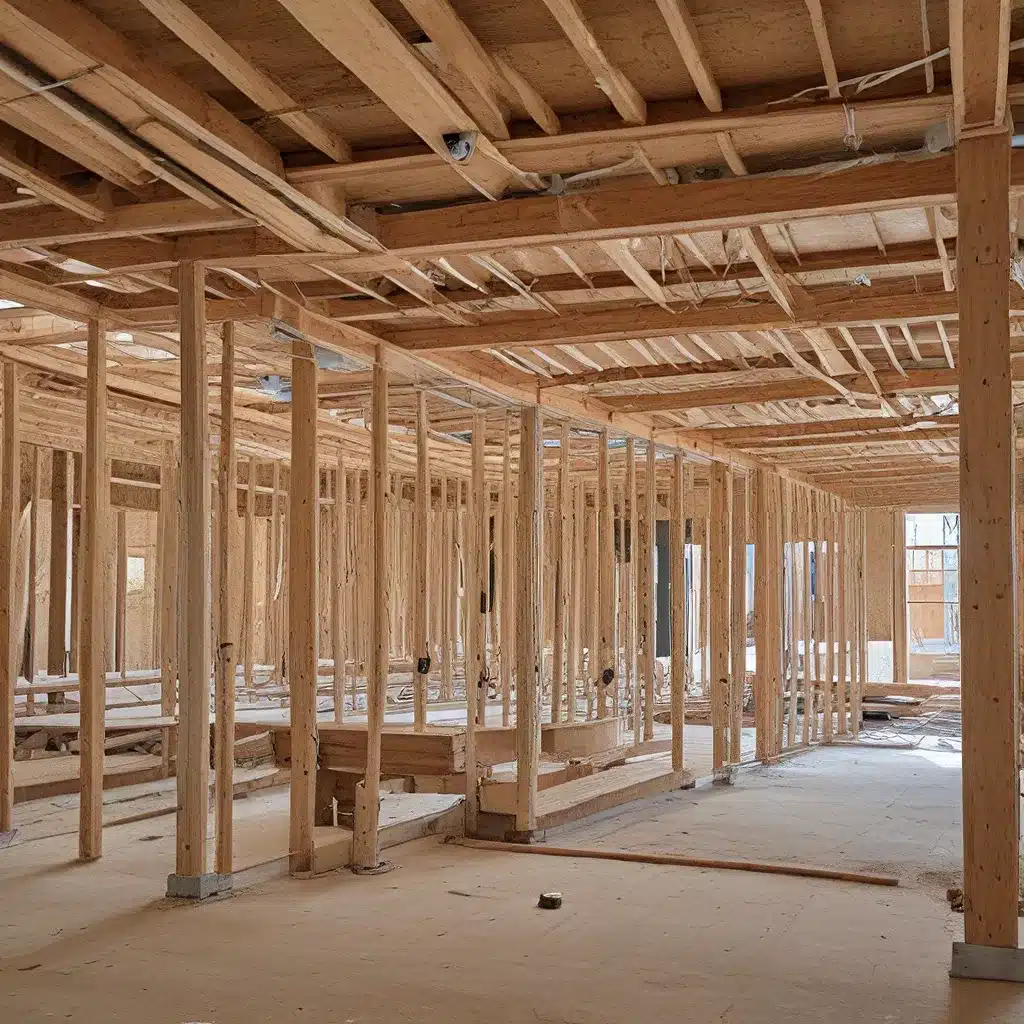
Ah, the world of general contracting – where every project is a delicate dance of planning, coordination, and sheer determination. As a seasoned general contractor, I’ve seen it all, from the dizzying heights of a successful build to the gut-wrenching lows of unexpected delays. But in recent years, a game-changer has emerged, and it’s called prefabrication.
The Rise of Prefabrication in General Contracting
Picture this: you’re in the midst of a major construction project, the kind that keeps you up at night, tossing and turning with endless checklists and contingency plans. But then, a ray of hope appears – the promise of prefabrication, a construction technique that’s been quietly revolutionizing the industry.
Prefabrication, or off-site construction, involves manufacturing modules, packages, or components in a controlled environment, away from the chaos of the construction site. These meticulously crafted elements are then transported to the job site and assembled, cutting down on-site construction time and minimizing disruptive on-site activities.
It’s like a well-choreographed dance, where every move is carefully planned and executed, ensuring a seamless performance. And let me tell you, as a general contractor, I’m more than happy to be the lead in this particular production.
Faster, Better, Stronger: The Benefits of Prefabrication
Speed, precision, and cost-effectiveness – these are the holy trinity of prefabrication, and they’re the reasons why general contractors like myself are embracing this innovative approach with open arms.
Speed: Traditional construction often involves a painstakingly slow on-site process, from pouring concrete to installing equipment. But with prefabrication, the manufacturing and on-site preparation can happen simultaneously, significantly reducing construction timelines. And in an industry where time is literally money, this is a game-changer.
Precision: Imagine building a puzzle, but with the added challenge of having to construct the pieces themselves. That’s the reality of traditional construction. With prefabrication, however, the puzzle pieces are meticulously crafted in a controlled environment, ensuring consistent dimensions, structural integrity, and adherence to design specifications. In an industry where even the slightest deviation can have disastrous consequences, this level of precision is invaluable.
Cost-Effectiveness: Prefabrication allows general contractors to leverage economies of scale, standardizing building components and capitalizing on bulk purchasing power without compromising quality. Moreover, off-site manufacturing reduces material waste, as components can be precisely engineered to minimize excess. This not only benefits our bottom line but also aligns with the growing emphasis on sustainability in the construction industry.
But the benefits of prefabrication don’t stop there. It also enhances safety on construction sites, a critical concern in our high-risk environment. By minimizing on-site activities and exposing workers to fewer potential hazards, prefabrication helps create a safer working environment, reducing the risk of accidents and injuries.
Prefabrication and Sustainability: A Match Made in Construction Heaven
As a general contractor, I’m always on the lookout for ways to reduce our environmental impact while delivering exceptional results for our clients. And prefabrication is the perfect partner in this quest for sustainability.
Prefabricated components can be designed with energy-efficient features, such as advanced insulation, optimized airflow management, and integrated renewable energy systems. By incorporating these sustainable design principles into our prefabricated modules, we can not only reduce operational costs for our clients but also minimize our carbon footprint.
But the sustainability benefits of prefabrication don’t stop there. This approach also supports the principles of the circular economy, where building components can be disassembled, repurposed, and recycled at the end of a project’s lifecycle. Imagine the impact we can have by minimizing waste and maximizing resource efficiency – it’s a win-win for both our clients and the environment.
Challenges and Overcoming Obstacles
Now, I’d be remiss if I didn’t acknowledge that prefabrication in general contracting isn’t without its challenges. Designing and manufacturing complex building components requires advanced engineering expertise and specialized facilities. Coordinating the seamless integration of these prefabricated modules into the overall construction process can also be a logistical minefield, particularly for large-scale projects in urban areas or remote locations.
But as the old saying goes, “where there’s a will, there’s a way.” And we general contractors are nothing if not determined problem-solvers.
By leveraging Building Information Modeling (BIM) and other advanced technologies, we can streamline the design and planning process, ensuring a smooth transition from the factory to the field. And by forging strong partnerships with specialized prefabrication manufacturers, we can tap into their expertise and resources, overcoming the challenges of in-house production.
It’s all about finding the right balance, the perfect harmony between innovation and execution. And as a general contractor, I can assure you that we’re up for the challenge.
The Future of Prefabrication in General Contracting
As the demand for construction services continues to grow, the need for efficient, scalable, and sustainable infrastructure has never been more pressing. And general contractors like myself are determined to meet this challenge head-on.
Prefabrication, my friends, is the key to unlocking the future of general contracting. With its ability to enhance speed, quality, safety, and environmental performance, it’s the perfect solution for a rapidly evolving industry.
So, what does the future hold for prefabrication in general contracting? I see a world where modular construction takes center stage, where buildings are assembled like high-tech Lego sets, with seamless integration of cutting-edge technologies. A world where sustainability isn’t just a buzzword, but a guiding principle that shapes every aspect of the construction process.
And I can’t wait to be a part of it. Because as a general contractor, my mission is to not just build structures, but to create masterpieces that stand the test of time – both in terms of physical durability and environmental impact.
So, let’s raise a metaphorical hammer to the future of prefabrication in general contracting. It’s a future filled with endless possibilities, and I can’t wait to see what we can create together.
Related posts:
No related posts.




